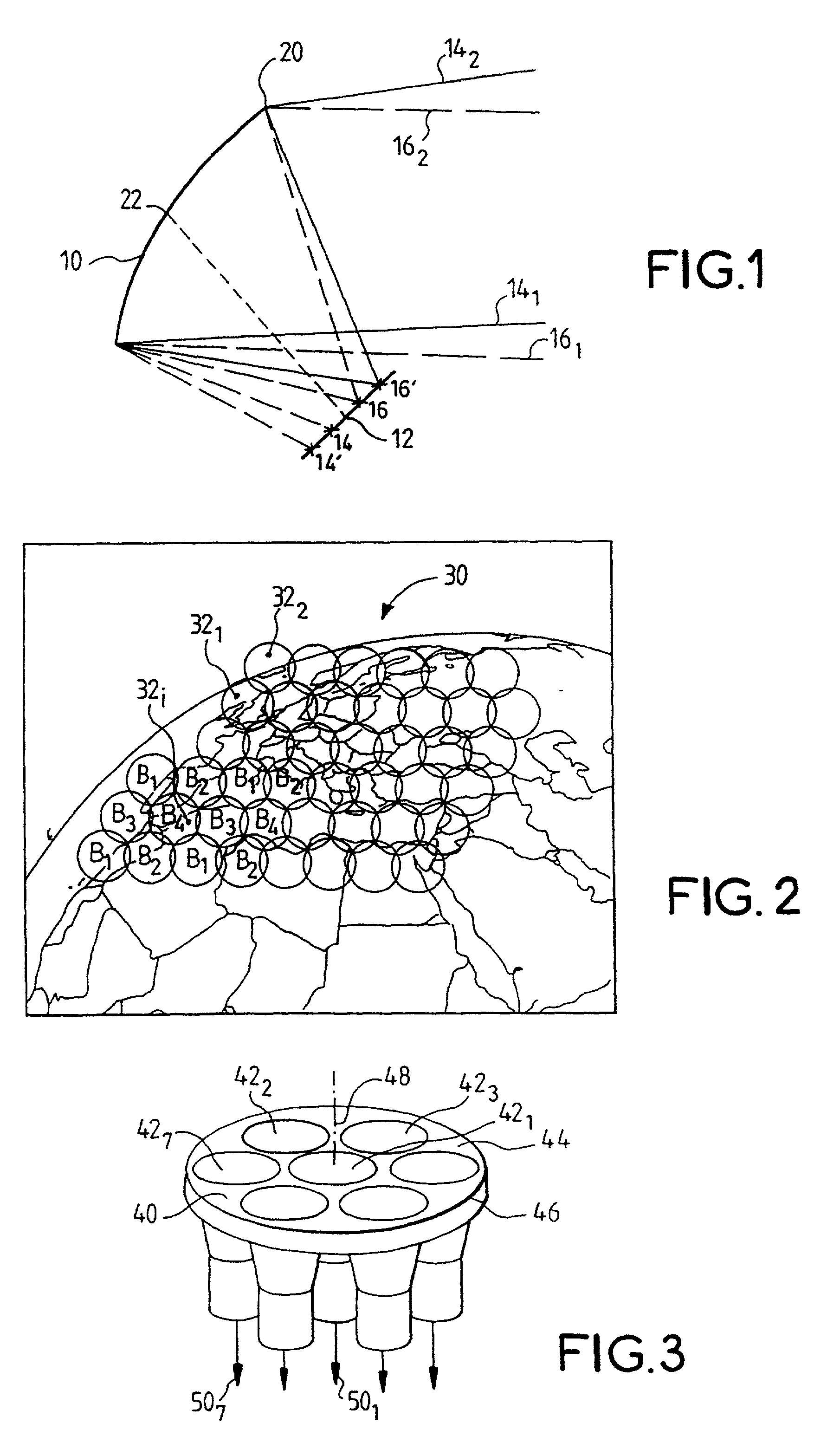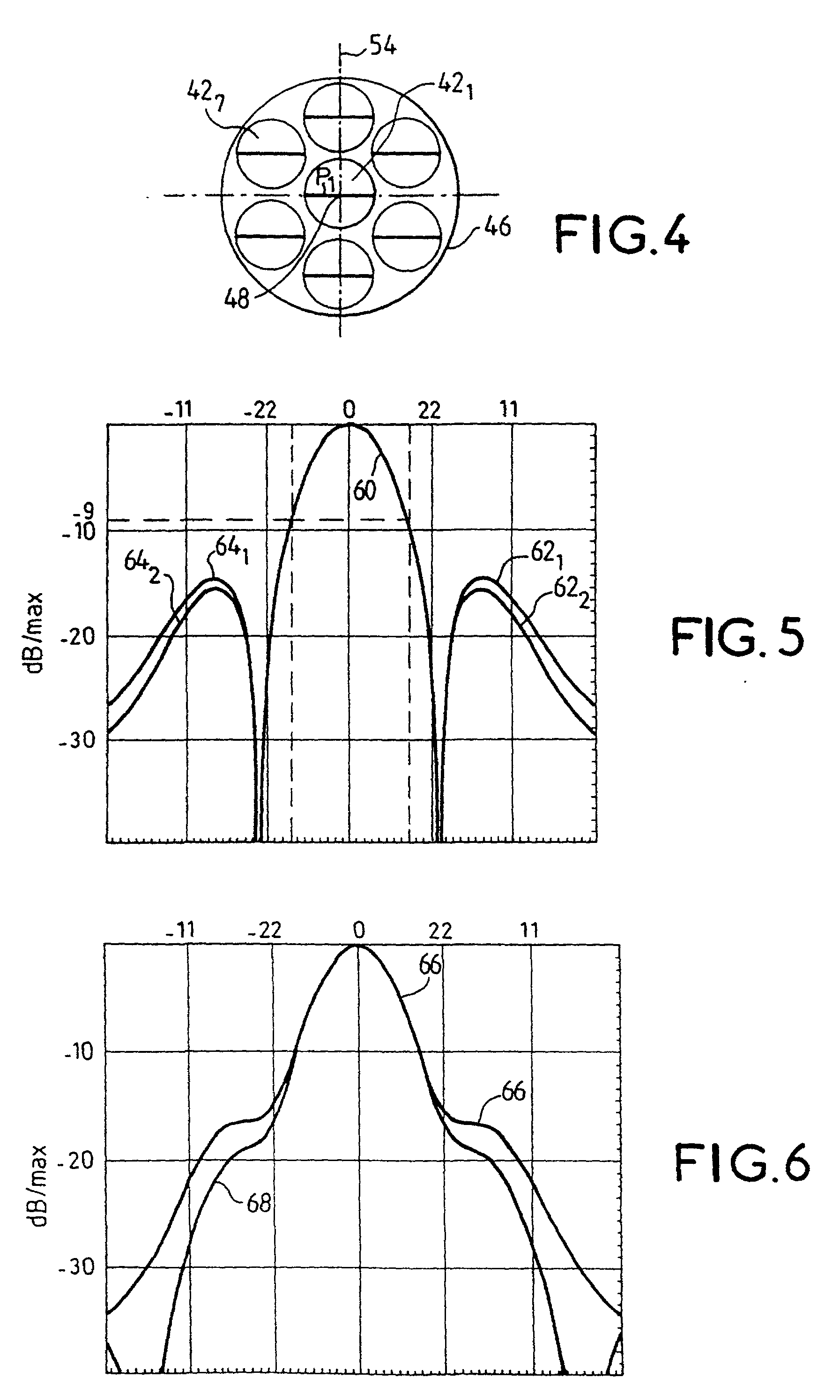Radiating source for a transmit and receive antenna intended to be installed on board a satellite
- Summary
- Abstract
- Description
- Claims
- Application Information
AI Technical Summary
Benefits of technology
Problems solved by technology
Method used
Image
Examples
Embodiment Construction
[0049] The embodiment of the invention described with reference to the drawings is a transmit and receive radiating source 40 intended to be installed on board a geosynchronous satellite (not shown) constituting a relay for calls of a telecommunications system in a region 30 (FIG. 2) covering a large part of the European continent and part of the African continent. The region is divided into circular zones 32.sub.1, 32.sub.2, etc.
[0050] The whole of the region 30 is covered by the geosynchronous satellite (in orbit 36 000 km above the surface of the globe) with a cone of 6.degree. total aperture. The angular distance (as seen from the satellite) between the centers of two adjoining zones is 0.5.degree..
[0051] In this example, where the total number of zones 32.sub.i is 48, the satellite includes four reflectors and each reflector is associated with 12 primary sources corresponding to non-adjacent zones.
[0052] In the embodiment shown, each transmit and receive band is divided into fo...
PUM
 Login to View More
Login to View More Abstract
Description
Claims
Application Information
 Login to View More
Login to View More - R&D
- Intellectual Property
- Life Sciences
- Materials
- Tech Scout
- Unparalleled Data Quality
- Higher Quality Content
- 60% Fewer Hallucinations
Browse by: Latest US Patents, China's latest patents, Technical Efficacy Thesaurus, Application Domain, Technology Topic, Popular Technical Reports.
© 2025 PatSnap. All rights reserved.Legal|Privacy policy|Modern Slavery Act Transparency Statement|Sitemap|About US| Contact US: help@patsnap.com


